Growing aquilegia from seeds: rules and scheme
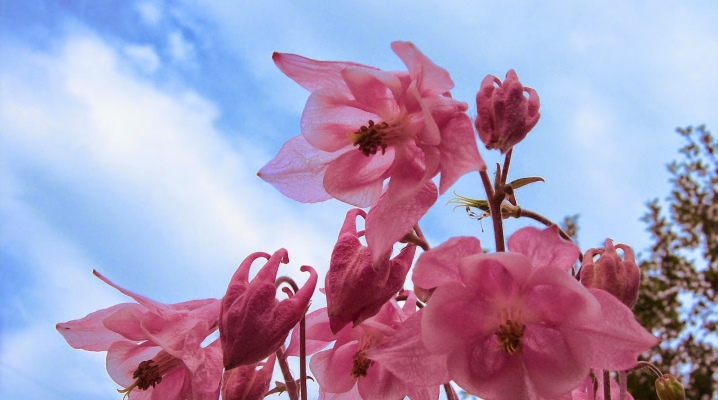
The cultivation process for each crop includes several methods. As for aquilegia, the most common option for obtaining a new plant will be seed germination. These works have their own nuances, knowledge of which will help to achieve the desired result.
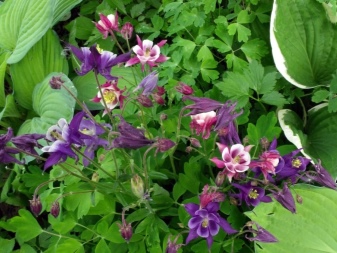
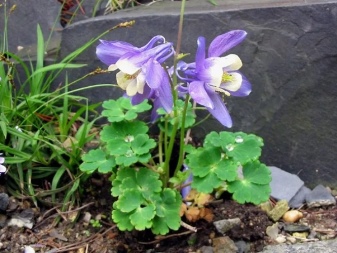
Collection and preparation of seeds
You can get planting material in several ways, in particular, collect the seeds yourself. For these purposes it is worth choosing plants of the same variety, planted at a distance from the rest of the varieties... This will help in the future to grow a crop without mixing the main characters, as is often the case in group plantings of aquilegia, where independent pollination and crossing of different varieties occurs. If this is not possible, then the selected culture for collecting planting material is preliminarily covered with gauze, and pollination is carried out manually, artificially.
The best time to collect seeds will be late summer - August. To get them, just press lightly on the seed pod. Pre-tying the flower will help eliminate the likelihood of premature shedding of propagation material. The collected seedlings are best dried at home.
Planting material should be planted as soon as possible, since fresh seeds have a higher germination rate. If sowing the seedlings did not work right away, before late planting (after 1-2 months), the seedlings will need preliminary stratificationas a mandatory preparation process.
In cases where aquilegia planting material will be purchased for cultivation, then before purchasing, you should carefully study the information about the collection time of the proposed seeds, storage conditions. In order to be guaranteed to grow a beautiful culture from the purchased material, you should refuse to buy seeds older than one year.
Regardless of the chosen method of obtaining planting material, you need to know that it will be suitable for growing no more than 5 years from the date of collection, and also provided it is stored correctly.
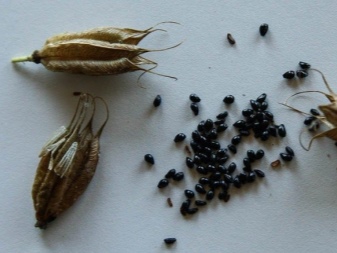
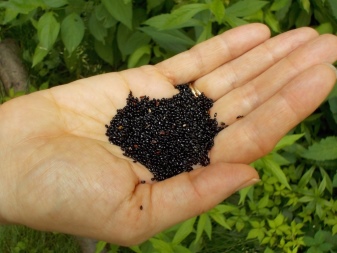
Sowing dates
The most suitable time for working with aquilegia seeds will be autumn; it is best to carry out all the necessary manipulations soon after receiving the seeds from the crop you like. However, as practice shows, it will also be possible to grow a new crop from seeds with early planting in spring, sowing the material directly into the ground, germinating seedlings at home. As a rule, no preparatory work is carried out before the autumn planting.
It is recommended to pre-harden the seeds before spring rooting. In the spring, they can be planted in the garden in April or in the first weeks of May, but provided that the soil is already sufficiently warmed up. In spring or autumn, they are deepened into the ground by 1 centimeter, using a covering material, which should be removed after the first shoots appear from the ground.
For some regions of Russia, there are certain recommendations regarding the timing of planting aquilegia seeds:
- for the middle lane, including the Moscow region - mid-end of March;
- for the south, the period from late February to March is recommended;
- for the northern regions - the Urals, Siberia, the Volga region - the end of April.
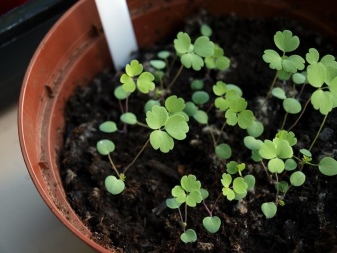
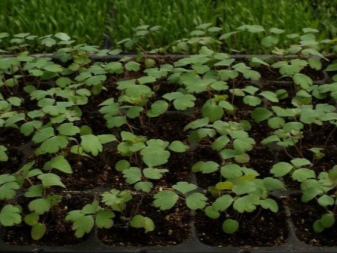
Selection of soil and capacity
In order to grow aquilegia from seed to be successful, it is worth paying special attention to the type of soil that is used in the garden or in the seedling box.As for the most suitable container for aquilegia seedlings, it is recommended to give preference to shallow pots, but not flat containers. The young plant should have room for root stem growth. The picking of the crop is usually carried out in peat or paper cups, in which the plant can be rooted in the garden in the future.
An important nuance regarding the capacity will also be the presence of good drainage. If holes for removing excess moisture are not provided, then they should be made by yourself. No drainage is required for peat pots or tablets.
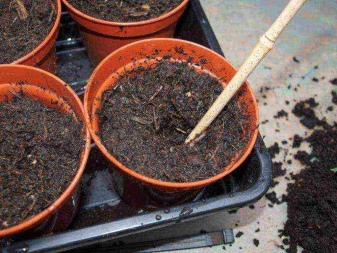
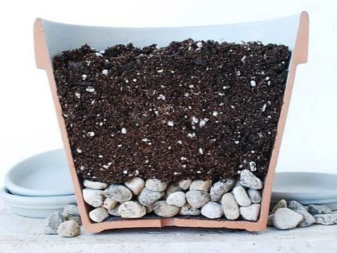
As for the choice of a suitable substrate, for aquilegia seedlings, you can purchase a store-bought universal soil or prepare a soil mixture yourself. For these purposes, you can use:
- turf and leafy land;
- river sand;
- humus.
All ingredients must be taken in equal amounts. It is important to disinfect them before combining all the components in order to exclude the presence of dangerous viruses or pest larvae.
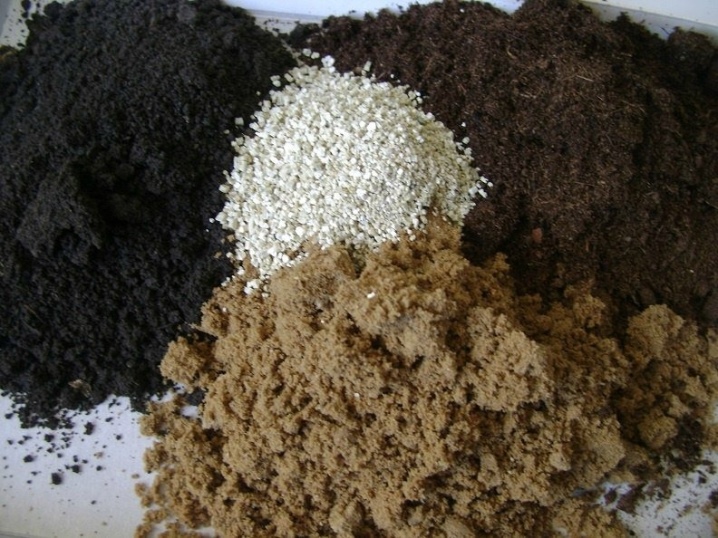
How to sow?
The pre-landing procedure will be stratification. It can be done in several ways, using seed aging at low or high temperatures. Among the most commonly used methods, the following are worth highlighting:
- planting material is sent to the refrigerator for 1-1.5 months;
- seeds with earth are placed in a bag, after which they are sent to the cold for the whole winter;
- seeds rooted in sand or soil mixture are taken out into fresh air, placed in the snow;
- also the collected material can be kept for a month at a temperature of at least +35 C;
- the seeds are subjected to scarification - processing with sandpaper.
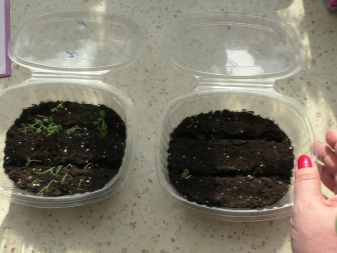
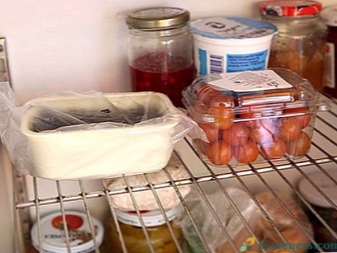
The seeding algorithm after stratification is as follows.
- The soil in the open air or in a container should be loose. Seeds are carefully sown into it; it is worth deepening them by no more than 1 centimeter.
- Next, you need to moisten the soil. The liquid should be introduced little by little, so as not to squeeze the seeds out to the surface.
- The next step is to cover the crops with a layer of mulch or compost, you can also use dry foliage. At home, instead of a layer of mulch, you need to organize a greenhouse for the seeds, covering them with glass or transparent film.
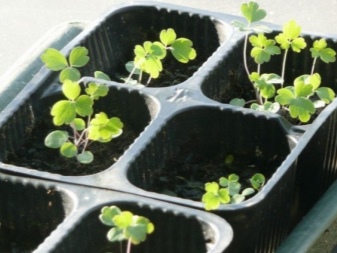
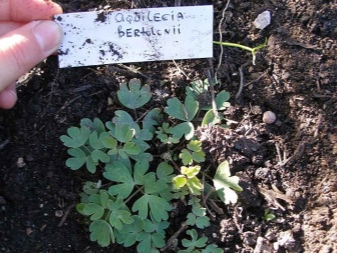
For old seeds, the planting algorithm will look like this.
- First, the planting material must be soaked in water or use a weak solution of potassium permanganate. The liquid should not be cold.
- Then the seeds are deepened into the substrate, covered with a layer of soil, no more than 1 centimeter.
- In this form, the container with the planting material should be indoors without additional shelter for about 4 days. Over time, the seedlings are kept outside for about a week. You can also put the containers in the refrigerator.
- Then the container is brought back into the heat, germinating the seeds according to the standard scheme indoors.
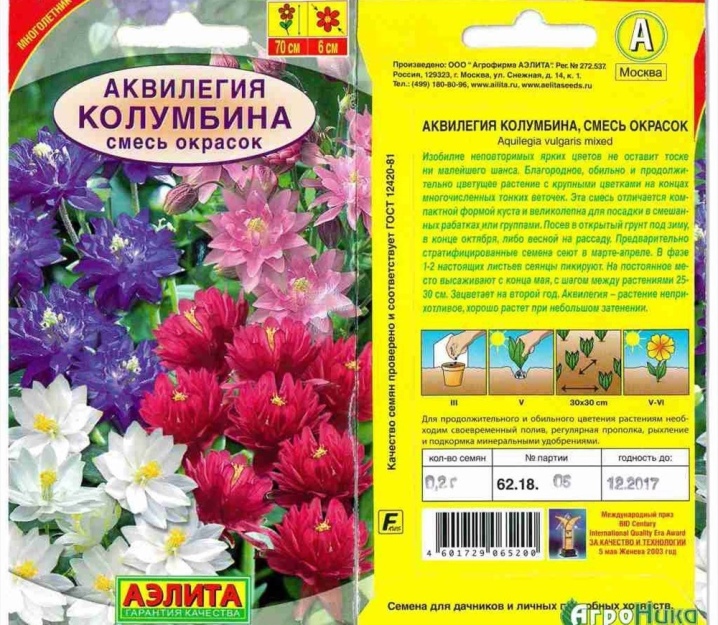
Seedling care
In order for the flowers to take root, and also to please the gardener with their appearance, the seedlings of young crops must be properly cared for. The main points regarding agricultural technology are as follows.
- Until the first sprouts of aquilegia appear in the container or in the open field, it is necessary to moisten the culture with a spray bottle. When the seedlings grow up and get stronger, it is recommended to water it with a syringe or an ordinary medical syringe without a needle. You should use settled water at room temperature for irrigation.
- While the container with seeds or the garden bed is covered with glass or foil, in order to avoid high humidity, which can lead to rotting, it is necessary to regularly ventilate the greenhouse. To do this, it is opened daily for 20-30 minutes in the daytime, excess condensation must be removed.
- The first shoots that hatch in the ground usually appear after one and a half to two weeks. After their appearance, the covering material is removed.
- Seedlings need good lighting.Therefore, the access of light to the young must be maintained at the proper level, regardless of the time of planting the seeds. The optimal daylight hours will be 12-14 hours. In the open field, it is better to plant an aquilegia in places where it will be reliably protected from direct sunlight. Lighting should be diffused.
It would be more correct to plant seeds in a deep pot so that the root system of the aquilegia can fully develop. A flower grower should know that seedlings, on which 2-3 leaves will already be present, will have a rather long root stem. In light of this feature, the plants are already in dire need of picking. Usually these works are carried out in the morning or after sunset.
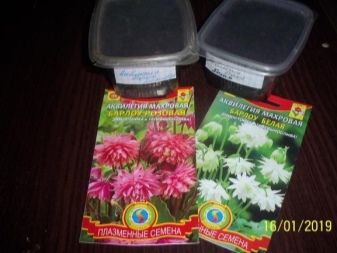
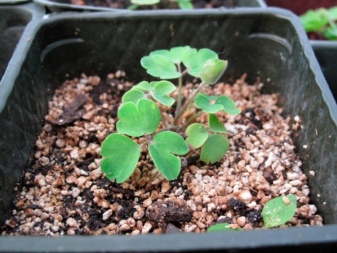
The seedling dive algorithm is an important stage in crop cultivation. In order to correctly perform all the manipulations, it is recommended to adhere to the following scheme.
- Plants planted before winter or spring are pre-watered. This should be done in 20-30 minutes.
- The next step is to prepare a new tank with soil. A recess is made in it in the center.
- Further, the seedling is lifted from the old soil, transferred to a new container. For the convenience of transplanting, you can use a small spatula or stick.
- The culture is placed in a depression, the ground around the seedlings is compacted. After that, the transplanted culture must be moistened with a spray bottle.
- Further care of the plant does not differ from standard agrotechnical work. Aquilegia should be fertilized every two weeks using complex mineral formulations.
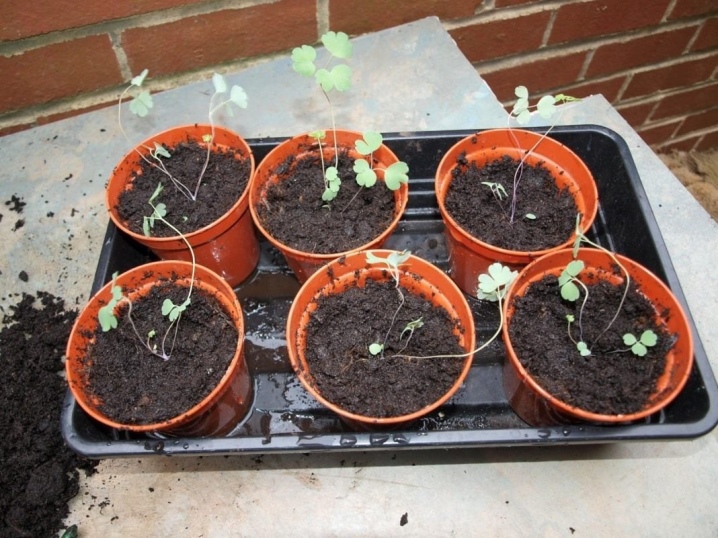
How to plant outdoors?
After the seedlings get stronger, and the threat of frost on the ground will be minimal, the seedlings that were grown at home will need to be transplanted into fresh air. As a rule, this happens at the beginning of summer - in May, June. Before work, it is important to choose the right place for aquilegia. In general, the culture is notable for its unpretentiousness, however, some nuances will be important for it. This applies to the area determined for planting a plant: it should be in the shade or partial shade so that in the first year the culture does not burn out from sunlight in the summer months.
As for the type of soil, aquilegia will develop well in almost any land, but it is best that it be loose soil with good aeration. You can fertilize a flower bed for a plant in the fall or spring before planting, using humus or compost for this. Aquilegia can be grown outdoors in temporary beds, and it is also not forbidden to create a composition from crops right away. However, the plant will be able to fully reveal its decorative effect not earlier than in the third year of life. If a group planting is planned, then the culture should be rooted with a step from each other of 25-40 centimeters.
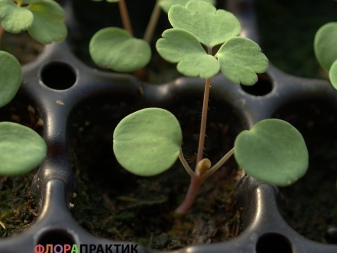
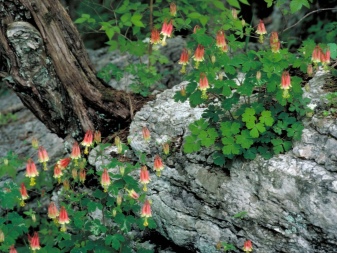
Aquilegia is planted in open ground according to the following scheme.
- Plants before transplanting in containers should be well watered for several hours. Allow liquid to absorb.
- Further, holes are made at the chosen place. They should be larger than an earthen lump in a pot.
- Young crops are transplanted from containers together with an earthen clod. The works are carried out by the transshipment method.
- Further, the plant is placed in the hole as evenly as possible; it is not recommended to deepen the aquilegia into the ground too much. It is best to keep it at the same level.
- The land around the culture must be tamped down and then watered. In addition, you can mulch the soil around to reduce the amount of weeds nearby.
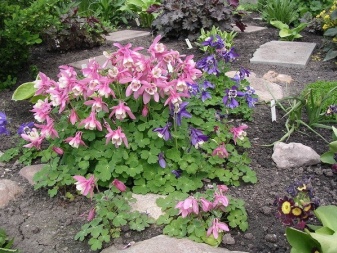
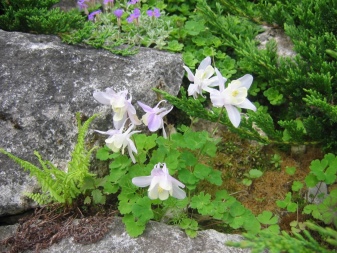
Next, watch a video with tips for sowing, planting and caring for aquilegia.




































































































The comment was sent successfully.